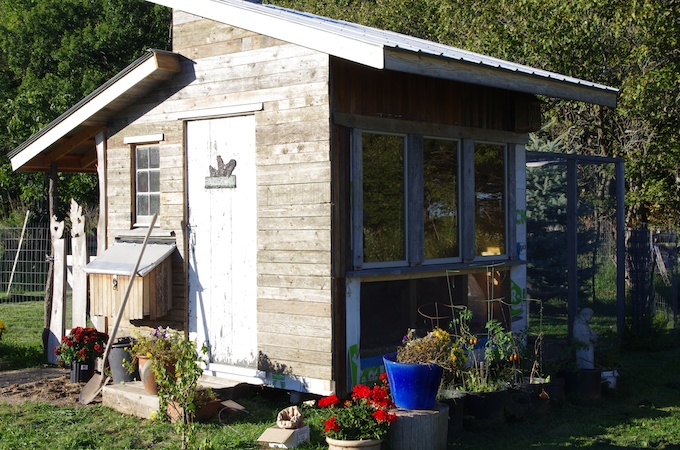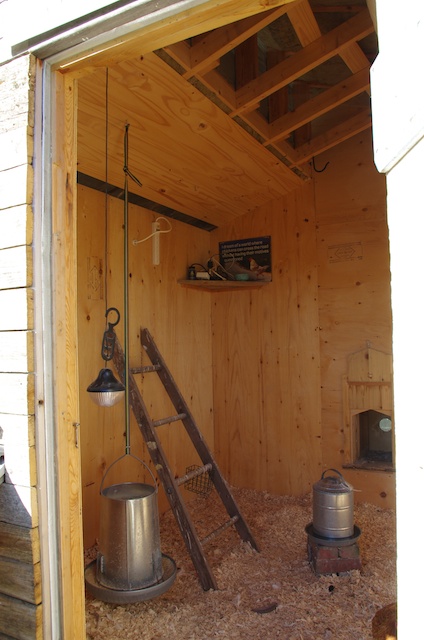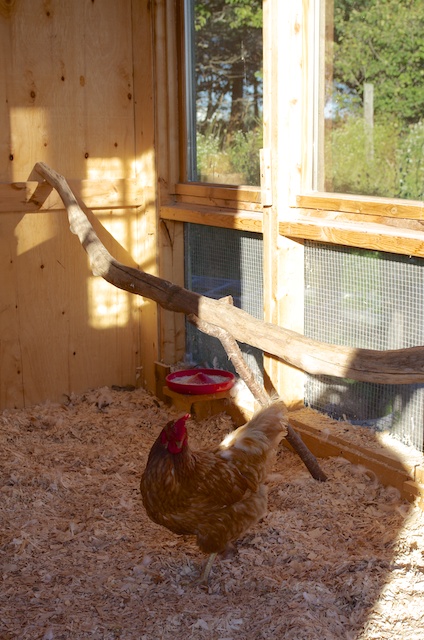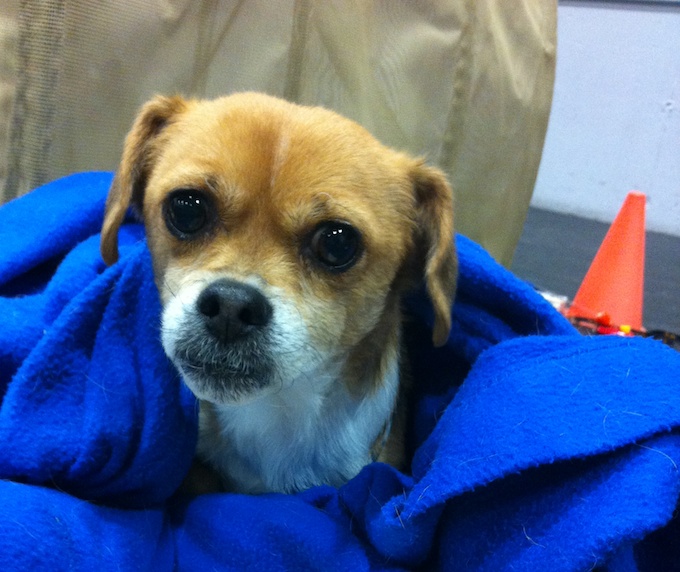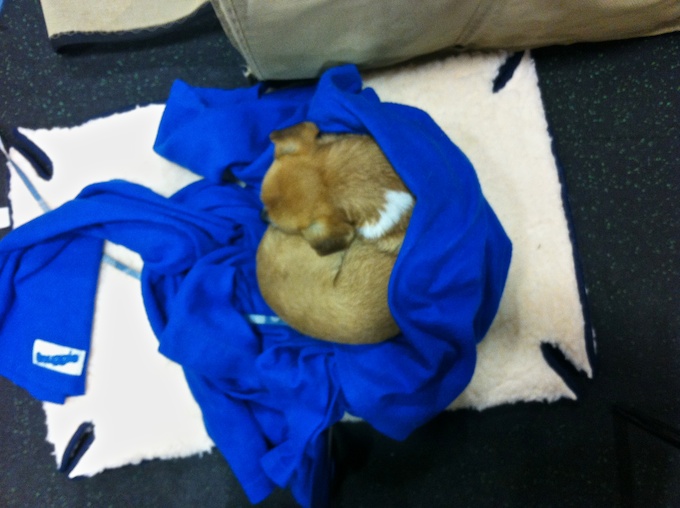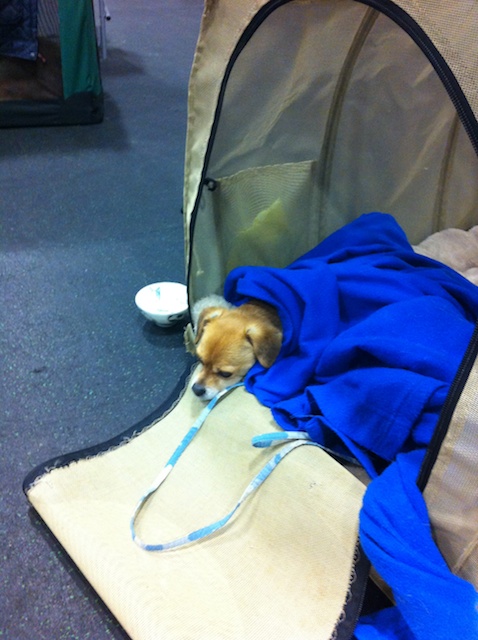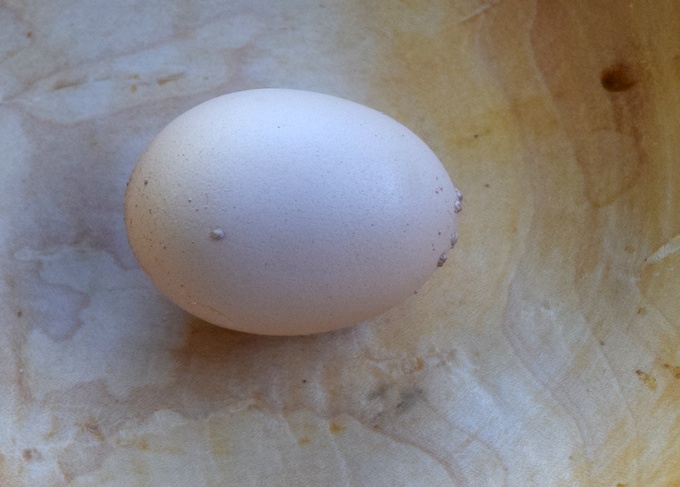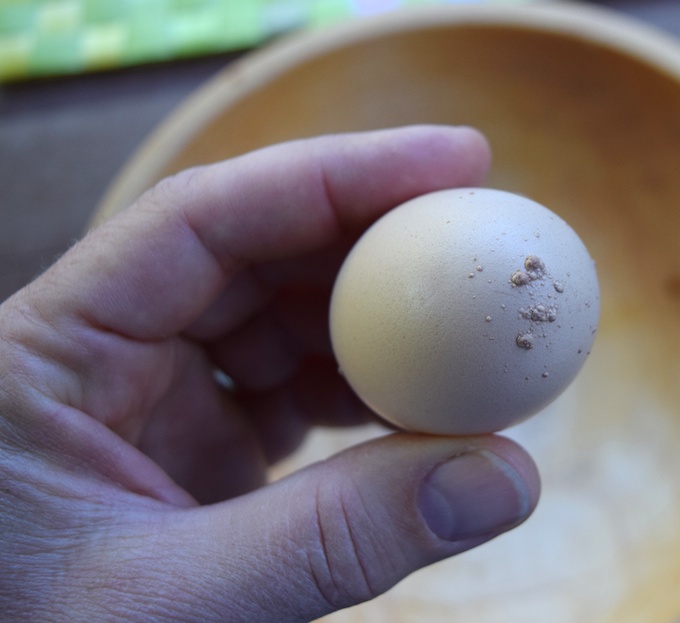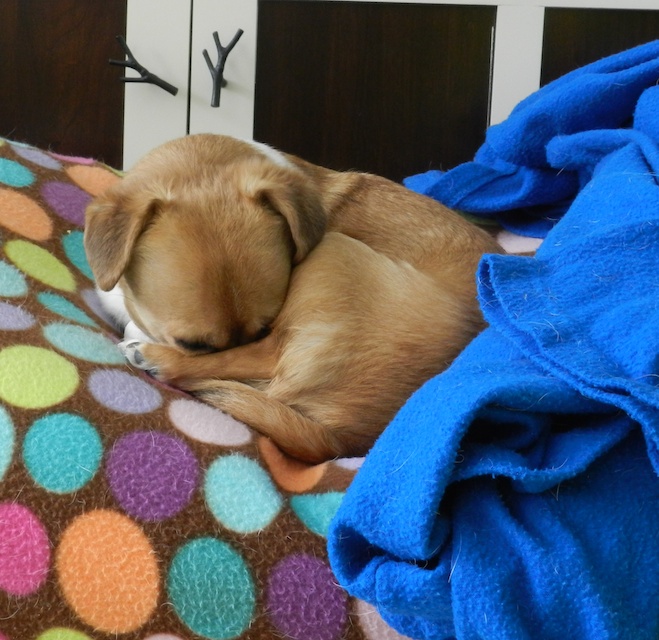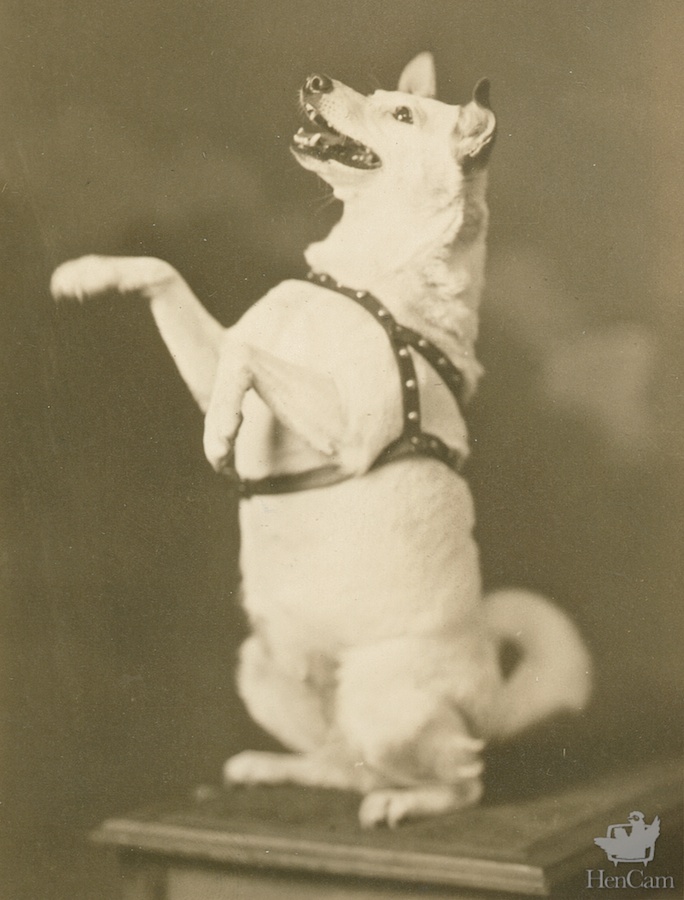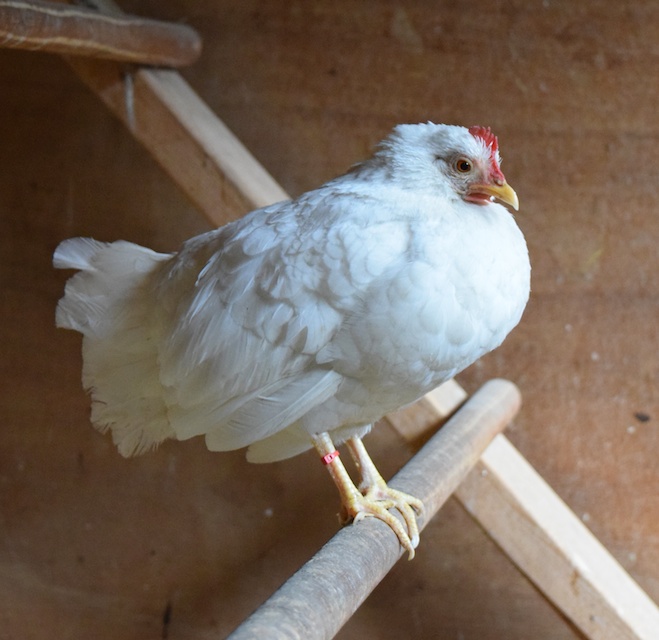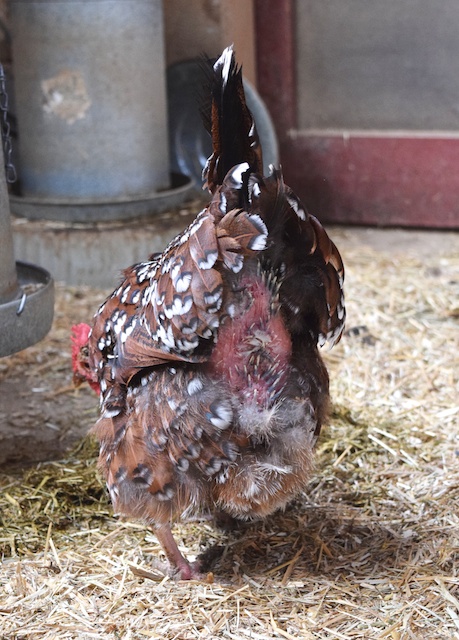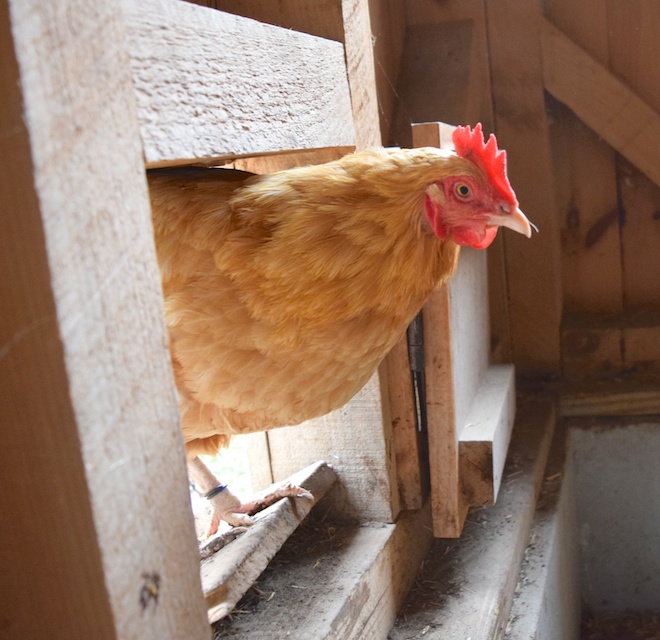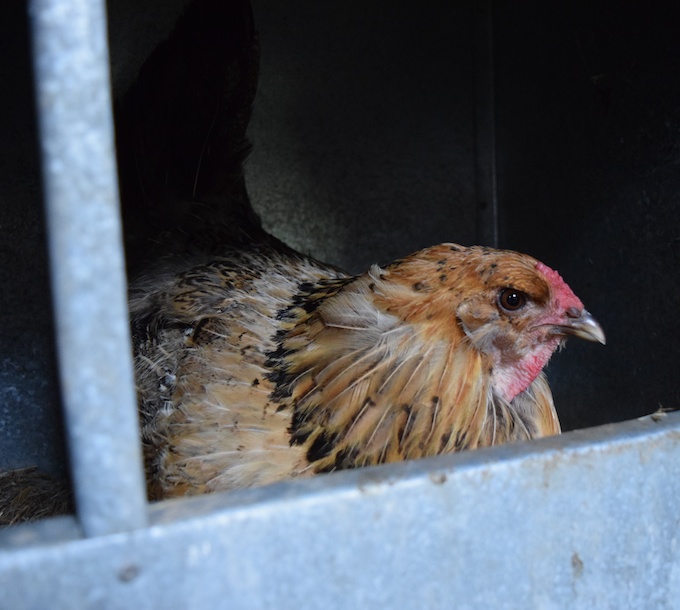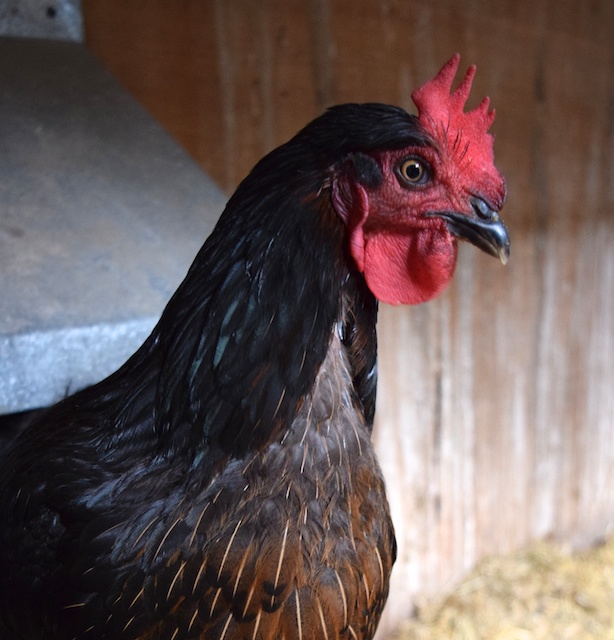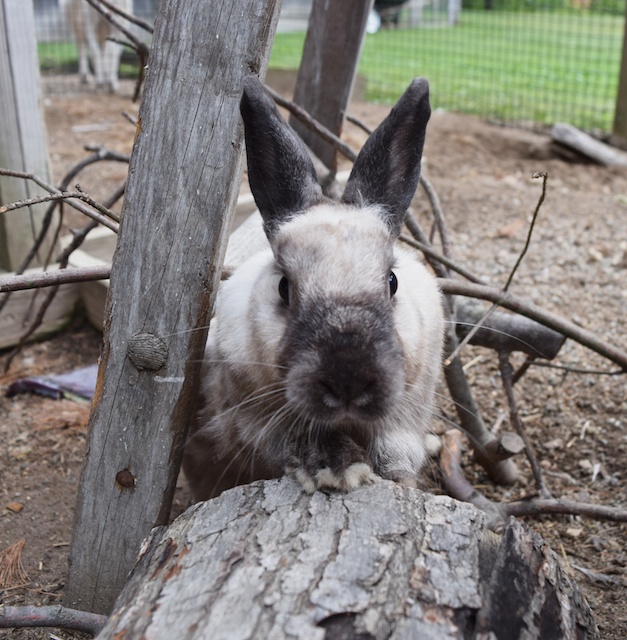It gets cold here in New England, but it’s even colder up in Ontario bordering a Great Lake. Last year, my friend Lisa, who lives up there, had issues with frostbite in her flock. The solution wasn’t heat, rather it was ventilation. Lisa’s partner is an architect, and so their new coop is very well designed – and beautiful!
The sloping roofs shed snow, and provide for ample ventilation via the eaves. If you’ve read this blog for any length of time, you’ll know how important I think that height and air flow is. This example is ideal.
There are large windows to let in the low winter light. Under the windows are screens for additional ventilation. During inclement weather, these are covered with a board that swings down and latches. There are nesting boxes accessible to the outside, a pop door going into a covered run, and a convenient full-sized door for people.
You can imagine how cozy and yet filled with fresh air, this coop will be in the winter.
I’ll be talking at length about coop design at the Chicken Keeping Workshops this Sunday at my home in Carlisle, MA. Spaces remain. Sign up here!
